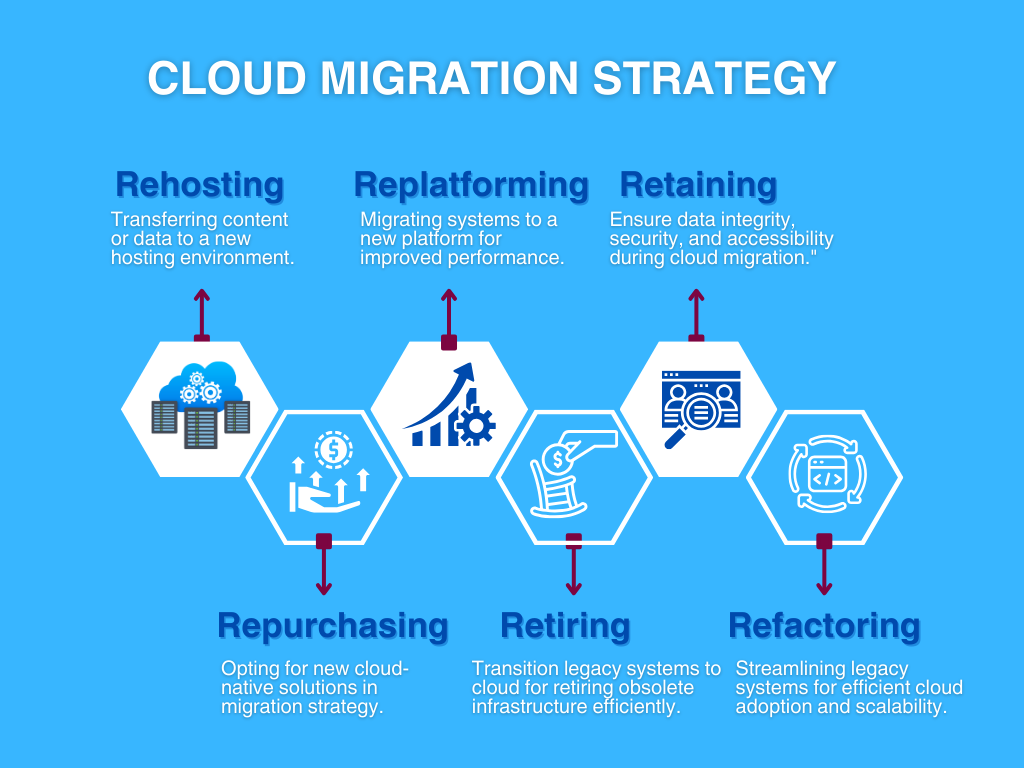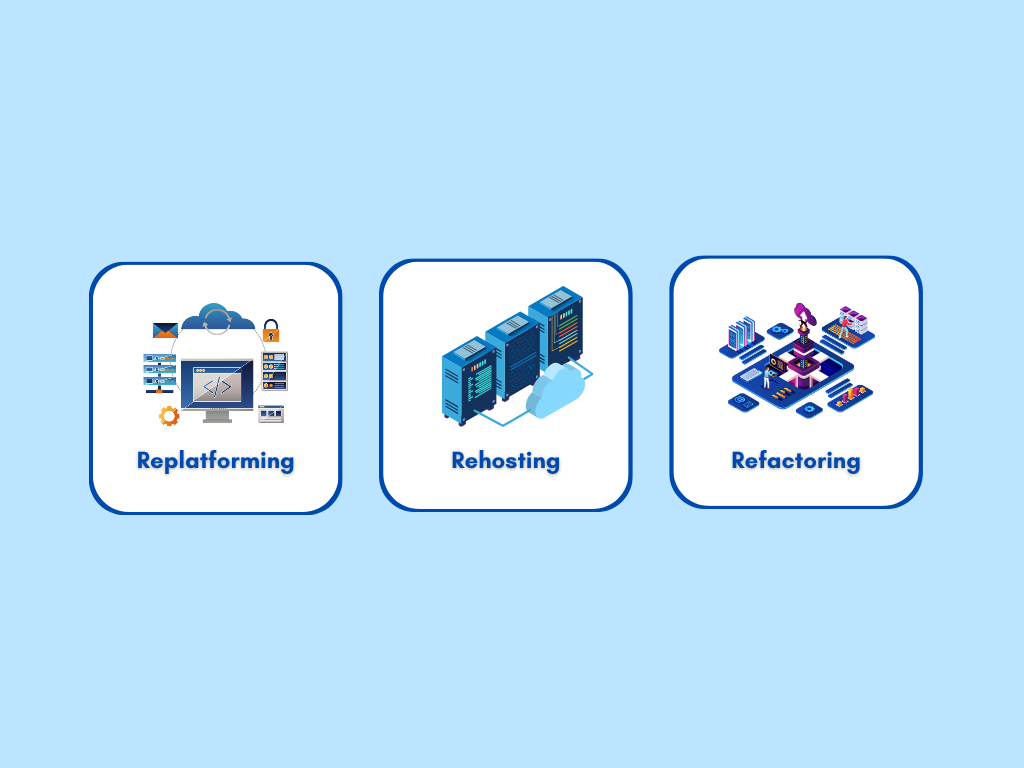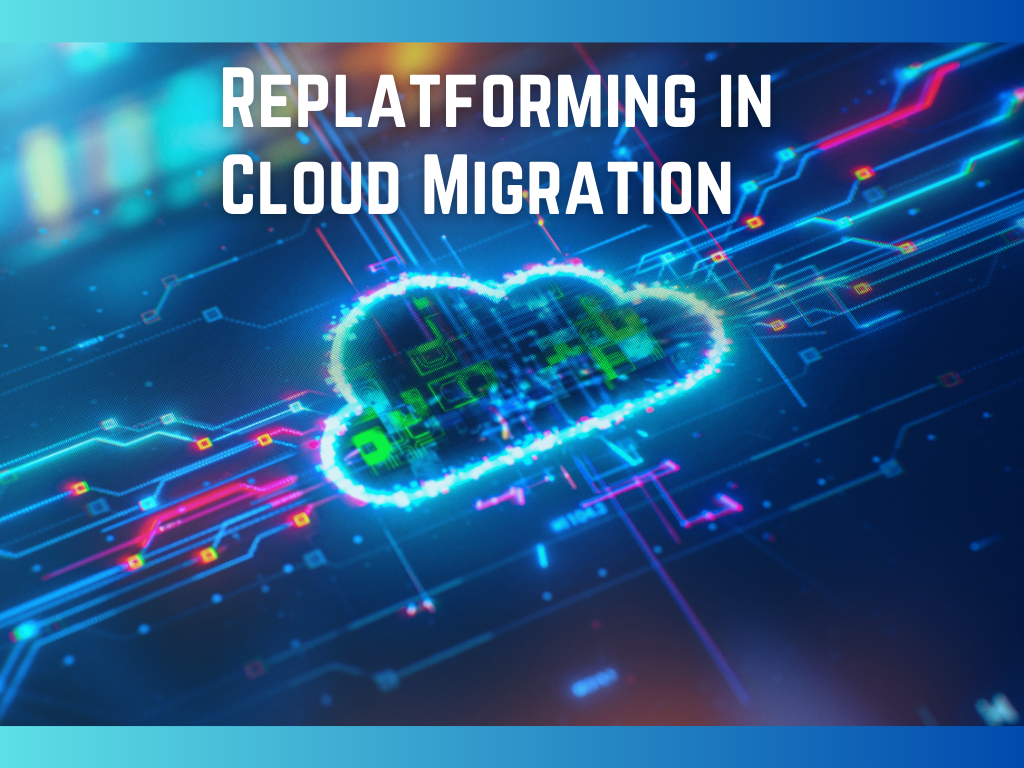Are you thinking about moving the business to the cloud? Wondering what replatforming in cloud migrationentails and how it can benefit your digital transformation journey? Do you find your current infrastructure limiting your business’s growth and agility? Do you want to move to the cloud but don’t know where to begin? You’re not alone if you said “yes” to any of these questions.
In today’s fast-paced world, businesses are constantly seeking ways to modernize their IT infrastructure to stay competitive and meet the demands of their customers. Replatforming in Cloud migration is a popular solution, offering scalability, flexibility, and cost-effectiveness. However, simply lifting and shifting your existing applications to the cloud may not be enough to harness its potential fully. This is where replatforming comes into play.
Why Replatforming Matters
Are you struggling with outdated infrastructure that hinders your business’s agility and scalability?
Is your current IT setup unable to meet the evolving needs of your customers and market demands?
Are rising maintenance costs and system downtime draining your resources and impacting productivity?
Are you seeking ways to leverage the full potential of cloud technology to drive innovation and growth?
Understanding Replatforming in Cloud Migration

Replatforming in cloud migration refers to the process of moving your existing applications and infrastructure to a new cloud environment while making necessary adjustments to optimize performance, functionality, and cost efficiency.
Replatforming involves evaluating your current systems and identifying areas for improvement and optimization.
It may entail modernizing legacy applications, updating software dependencies, and optimizing configurations to align with cloud best practices.
The goal of replatforming is to leverage the benefits of cloud technology while minimizing disruption to your business operations.
How does Replatforming work?
Assessment
Begin by conducting a comprehensive assessment of your current IT infrastructure, applications, and dependencies to identify areas that require replatforming.
Selecting a Target Platform
Choose the appropriate cloud platform based on factors such as scalability, performance, security, and cost-effectiveness.
Application Analysis
Evaluate each application to determine its suitability for replatforming, considering factors such as architecture, dependencies, and compatibility with the target platform.
Modify Applications
Make necessary modifications to the applications to optimize them for the cloud environment, such as updating configurations, addressing compatibility issues, and integrating with cloud-native services.
Data Migration
Migrate data to the cloud, ensuring data integrity, security, and compliance throughout the process.
Testing
Conduct thorough testing to validate the functionality, performance, and reliability of the replatformed applications, including integration testing and performance testing.
Deployment
Deploy the replatformed applications to the cloud environment, monitoring closely for any issues or disruptions.
Optimization
Continuously monitor and optimize the performance and cost-effectiveness of the replatformed applications, making adjustments as needed to ensure optimal performance and ROI.
What Is the Difference Between Replatforming, Rehosting, and Refactoring?

- Replatforming involves migrating applications to the cloud with minimal changes, optimizing them for cloud environments while preserving their core architecture and functionality.
- Rehosting, also known as “lift and shift,” involves moving applications to the cloud without making any modifications, essentially replicating the existing infrastructure in the cloud environment.
- Refactoring, or cloud-native redesign, involves rearchitecting applications to leverage cloud-native features and services fully, optimizing them for scalability, performance, and cost-efficiency.
Benefits of Replatforming
Improved Performance
Replatforming allows you to take advantage of the scalability and performance capabilities offered by cloud providers, ensuring optimal performance for your applications and services.
Cost Optimization
By optimizing your infrastructure and leveraging cloud-native services, you can reduce operational costs and eliminate the need for expensive hardware investments.
Enhanced Agility
Replatforming enables your business to respond quickly to changing market dynamics and customer needs, fostering innovation and competitive advantage.
Minimizes the time to benefit
Rather than waiting to completely rework the app’s architecture, you can get the most profitable modifications to market faster and start making money much sooner by prioritizing those changes.
Increased Resilience
Cloud-based infrastructure offers built-in redundancy and disaster recovery capabilities, ensuring high availability and data integrity.
Future-Proofing
By replatforming your applications, you can future-proof your business against technological obsolescence and stay ahead of the curve in a rapidly evolving digital landscape.
Reduces operational risk
Over time, updating and optimising particular components helps lower risks like unexpected security vulnerabilities, issues with compliance, and problems with service availability.
Reduces staff overload
Your engineers, system operators, and end users will have ample time to adjust if you restrict the number of modifications you make to particular areas of your application or workload. This will guarantee seamless customer support.
Read Also: Why IT Outsourcing is the Future of Business Growth
Challenges and Considerations of Replatforming
Migration Complexity
Replatforming can be a complex process, requiring careful planning, coordination, and execution to minimize disruptions and ensure a seamless transition.
Compatibility Issues
Legacy applications may pose compatibility challenges when migrating to the cloud, requiring customization and adaptation to function effectively in a new environment.
Data Security and Compliance
Ensuring data security and compliance with regulatory requirements is paramount when replatforming sensitive applications and data to the cloud.
Cost Management
While cloud migration offers cost-saving opportunities, it’s essential to monitor and optimize your cloud spending to avoid unexpected expenses and budget overruns.
Best Practices for Replatforming Success
- Conduct a thorough assessment of your existing infrastructure and applications to identify areas for improvement and optimization.
- Develop a comprehensive migration plan with clear objectives, timelines, and milestones to guide the replatforming process.
- Prioritize applications based on their business impact and technical complexity, focusing on high-value candidates for migration.
- Leverage automation and orchestration tools to streamline the migration process and minimize manual intervention.
- Implement robust monitoring and governance mechanisms to ensure the ongoing performance, security, and compliance of your cloud environment.
- Continuously evaluate and optimize your cloud infrastructure to adapt to evolving business needs and technological advancements.
Conclusion: Successfully Embrace Replatforming in Cloud Migration
In conclusion, replatforming plays a crucial role in the success of cloud migration initiatives by enabling organizations to modernize their applications and leverage the full potential of cloud-native technologies. By embracing replatforming best practices and overcoming challenges proactively, businesses can unlock greater agility, scalability, and cost-efficiency in the cloud. So, if you’re planning a migration to the cloud, remember to prioritize replatforming as a key strategy for achieving your business objectives.

